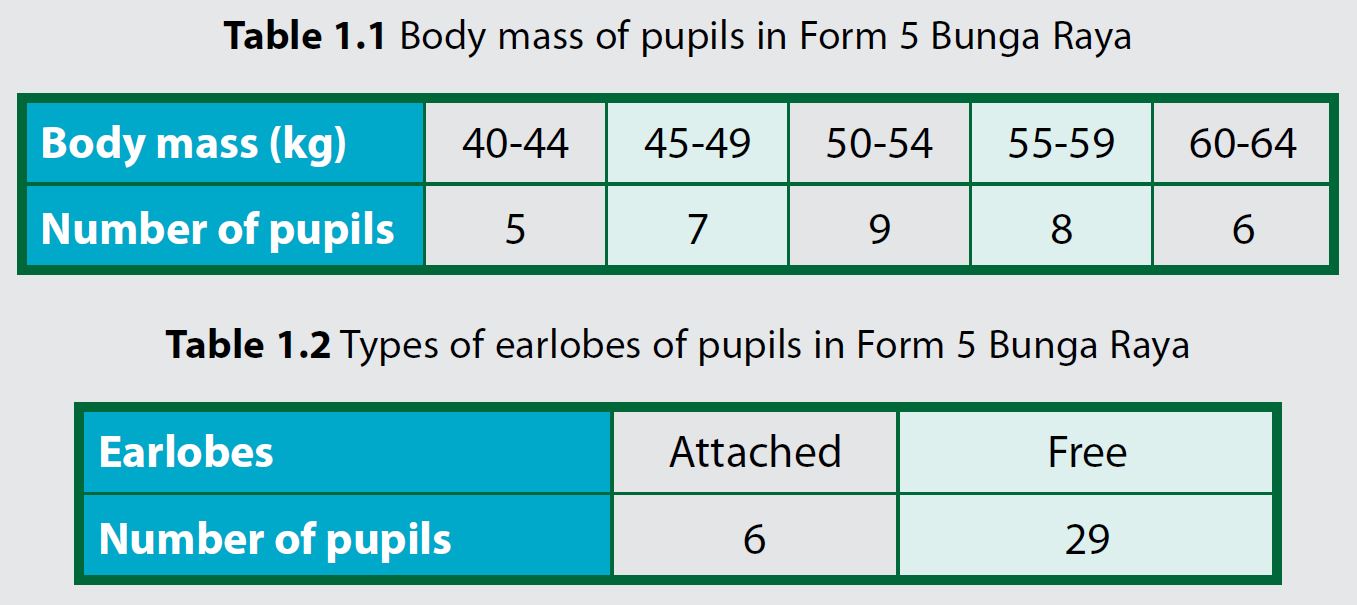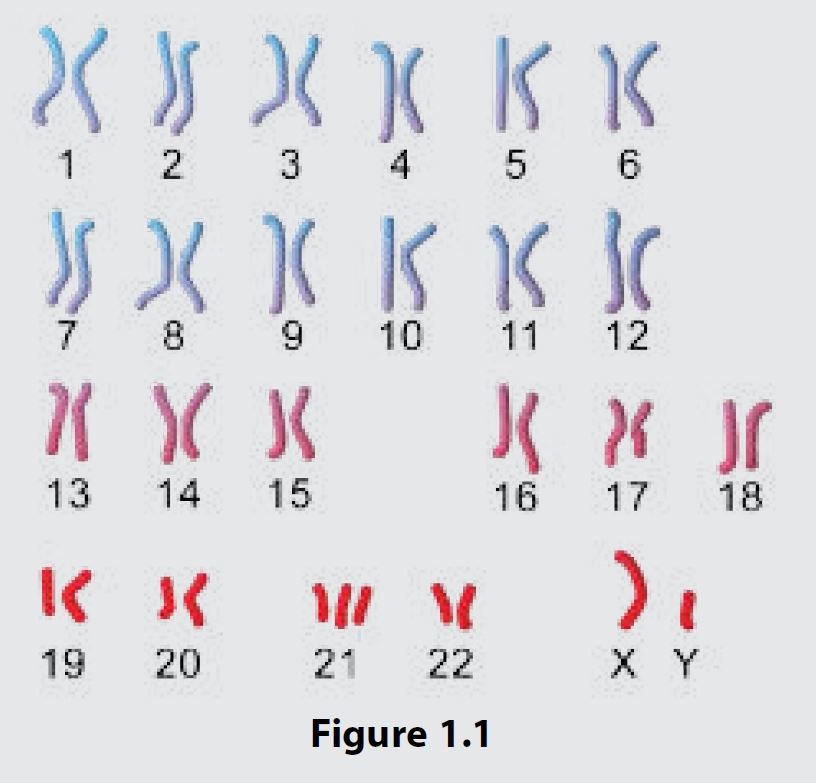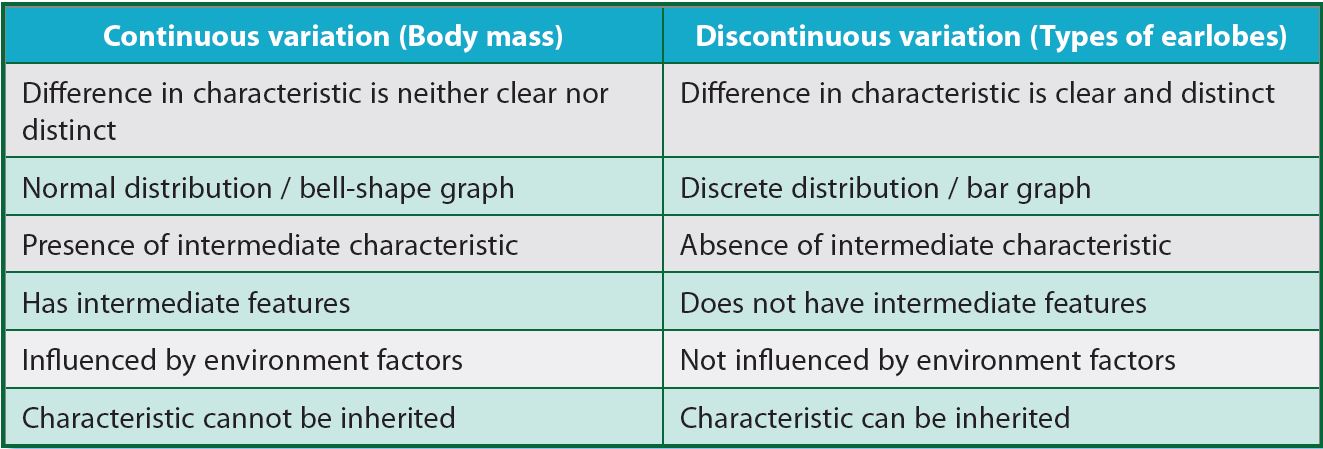Tables 1.1 and 1.2 show data that were collected for two different characteristics from 35 pupils in Form 5 Bunga Raya.

(a)(i) State the types of variation for body mass and types of earlobes.
(a)(ii) State two differences between body mass variation and types of earlobes variation.
(b) Figure 1.1 shows a karyotype of an individual who has a genetic disease caused by mutation.

(i) State the disease shown in Figure 1.1.
(ii) Which type of mutation causes the disease stated in 1(b)(i)?
(iii) Explain how the type of mutation in 1(b)(ii) causes the disease.
(c) The statement below describes trees of the same species planted in two different plots, X and Y on a farm.

The plantation was infected and all trees in plot X were killed whereas only part of the plants in plot Y died of the infection. Explain why all the plants in plot X were killed.
Answer:
(a)(i)
Body mass: Continuous variation
Types of earlobes: Discontinuous variation
(a)(ii) (Any two characteristics)
(Any two characteristics)
(b)(i) Down syndrome
(b)(ii) Chromosomal mutation
(b)(iii)
Failure of chromosome 21 to separate during meiosis / occurrence of nondisjunction of chromosome 21. It produces two chromosome 21 in one gamete. When this gamete is fertilised by a normal gamete, a zygote with three chromosome 21 is formed.
(c)
Trees in plot X are produced from tissue culture / cloning. Therefore, all trees have the same characteristics as their parent. Clones do not show variation in terms of genetics. They have similar resistance towards a disease. If there is an infection, all clones will be wiped out because they cannot survive the disease.